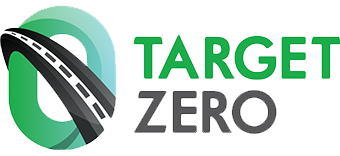STEP 2
Tool 2C
Workplace Policy Development Team Meeting 1 Outline

When?
Soon after an engaged policy is first made a priority for your organization.
Topic / Time
Meeting Leader Notes
Welcome & Introductions
5 min
Each person shares name, position, or role and length with the organization.
Meeting leader should emphasize:
- Safety is a TEAM approach
- The priority is to reduce distracted driving
- Our goal is to achieve higher levels of safety by going beyond compliance to commitment – a commitment to safety for one’s self and others.
Distracted Driving & Safety
5 min
Share a brief overview of distracted driving statistics, raising concern and hope about this important issue (Share data from your employee survey)
Understanding Priorities
20 min
Our policy will include 3 priorities:
- Drivers never drive distracted—to protect their life and safety, and that of passengers and bystanders.
- Speak up if you are with a driver who is distracted.
- Employees should encourage coworkers, friends and family to drive distraction-free.
Any policy must involve the 3 priorities for safe, responsible workplace driving.
Ask and discuss: When you consider those 3 priorities, what is most important to you?
Ask and record: What kind of impacts–positive or negative–do you think this type of policy might have on our workplace?
(Record responses)
Discussion Prompts:
- Who will it impact most?
- What will be the positives?
- What about negatives?
- How do you see it affecting you? Your department or division?
- How will it impact productivity?
- How will it impact customer service?
Creating and Implementing Policy
20 min
Ask and record: Considering the list of impacts, how can we make our distracted driving policy as successful as possible?
(Record responses)
Discussion Prompts:
- What incentives or consequences should we consider to enforce the policy?
- What makes other policies successful, what can we learn from them?
Wrap-Up and Next Steps
5 min
Thank you! Input will be used for drafting policy.
Key Terms for Workplace Distracted Driving Policies
Company business: any situation where an employee is performing tasks on behalf of their employer.
Hands-free device: a mobile device that can be operated through voice command, often through a wireless or Bluetooth connection, integrated into the vehicle.
Hand-held device: a mobile device that is operated while holding the phone in hand and operating it through pressing buttons or a touch screen.
Mobile device: any portable communication device including (but not limited to) mobile phones, smart phones, tablets, and laptop computers.
Employer-owned or Employee-owned device: Employees may conduct company business on devices that are either employer owned or employee owned. Both types of devices may be for work as well as personal uses.

